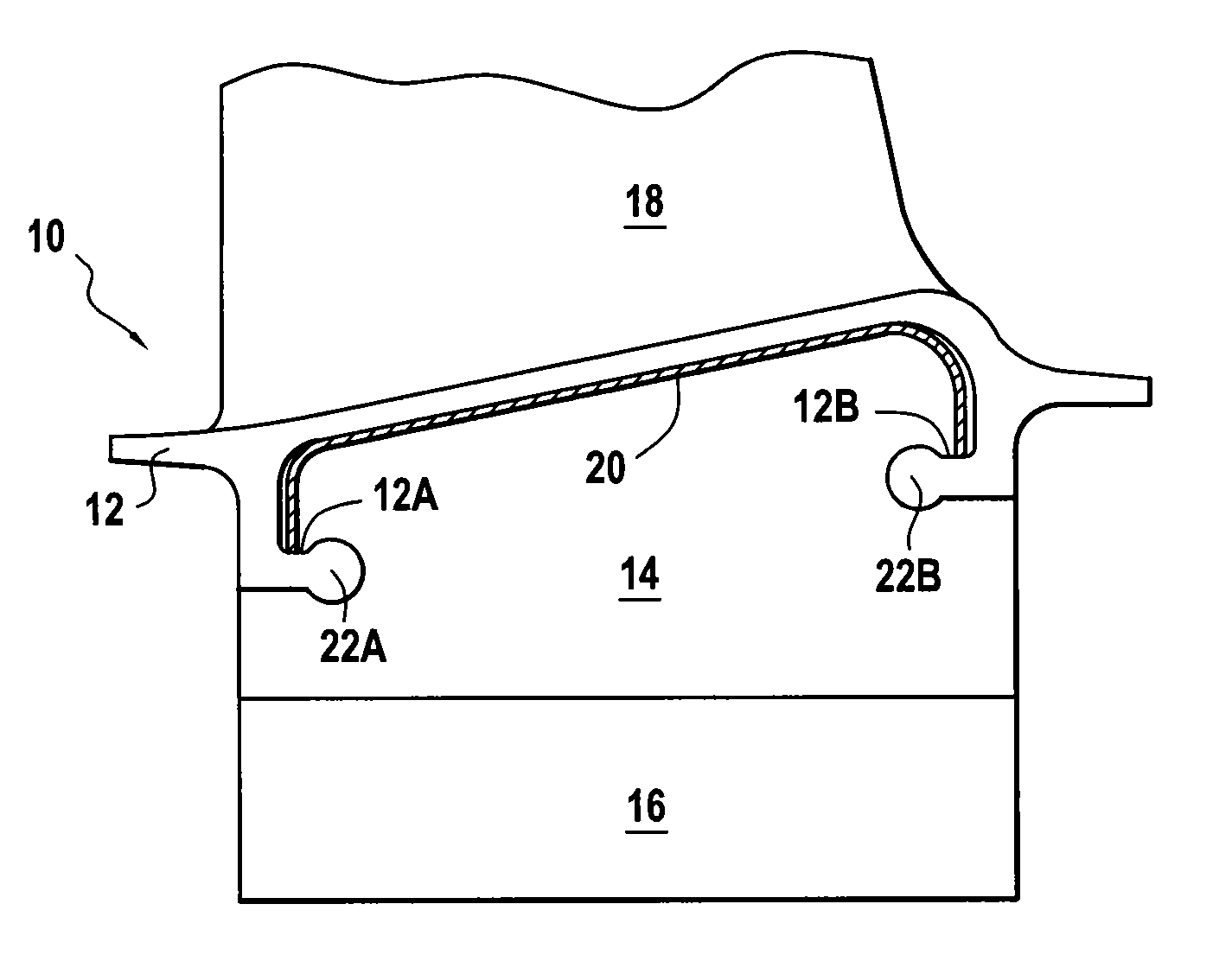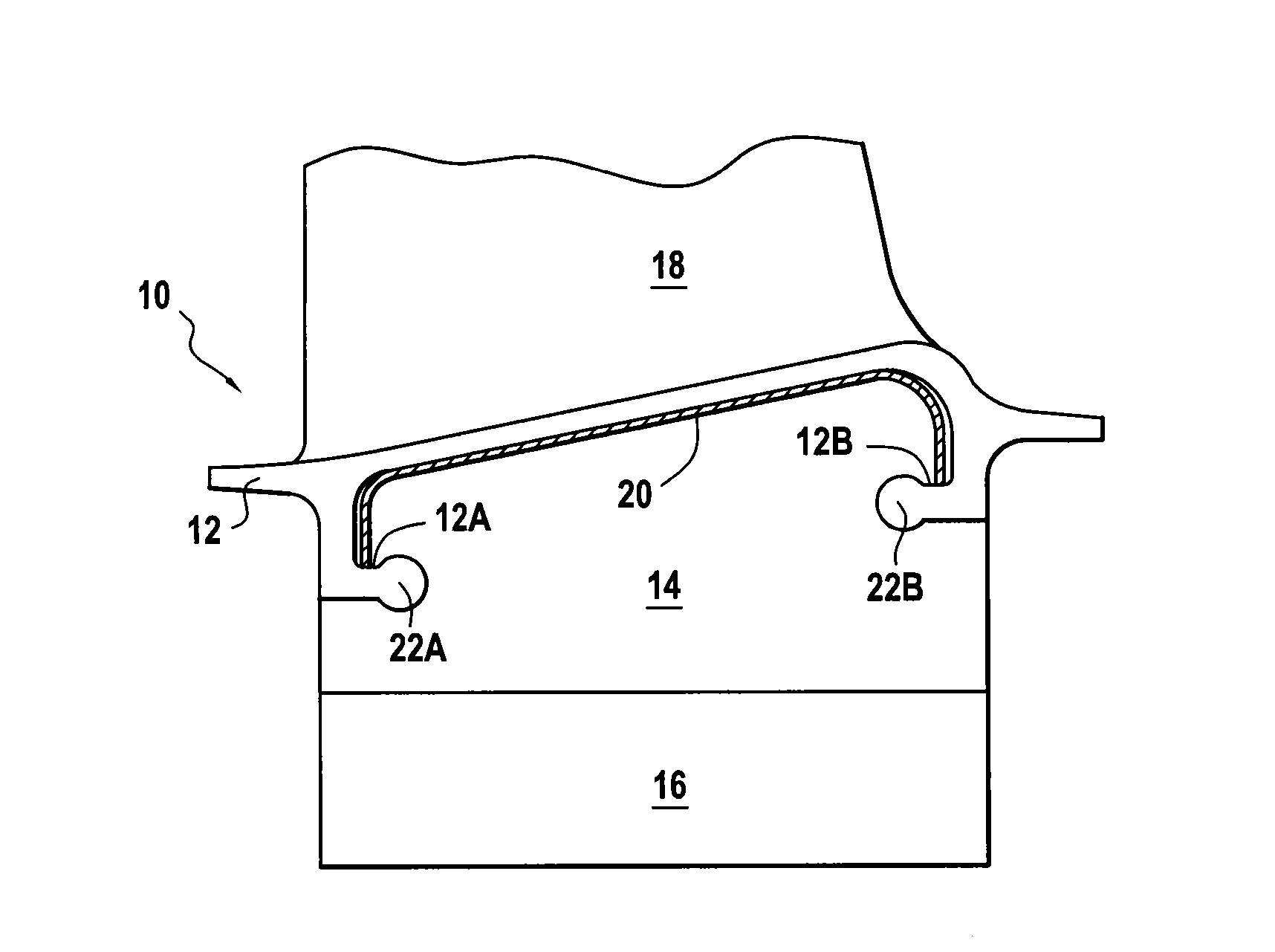Optimisation of the bearing points of the stilts of vanes in a method for machining said vanes
a technology of bearing points and stilts, which is applied in the field of optimisation of bearing points of stilts of vanes in a method of machining said stilts, can solve the problems of difficult to maximize the distance between bearing points, long and expensive fabrication using a foundry process, and particularly complex blade parts, so as to minimize mechanical stress concentration, reduce the effect of weight and reducing the amount of was
- Summary
- Abstract
- Description
- Claims
- Application Information
AI Technical Summary
Benefits of technology
Problems solved by technology
Method used
Image
Examples
Embodiment Construction
[0011]The sole FIGURE is an elevation view of a turbine engine blade 10, e.g. a fan blade, a turbine blade, or a compressor blade, that is fastened in known manner to the periphery of a rotor disk of the engine (not shown) and that typically comprises a blade root 16 of a Christmas tree or dovetail shape under a platform 12, and spaced apart therefrom by a stilt 14, which root is received in a corresponding slot or groove (not shown) in the periphery of the rotor disk.
[0012]The stilt 14 presents thickness that is small compared to the blade root 16 so as to pass through the opening defined by the slot and provide mechanical connection between the root and the aerodynamic portion (or airfoil 18) of the blade. Under the platform there are conventionally arranged both upstream and downstream supports 12A and 12B for a sealing liner 20, where “upstream” and “downstream” are relative to the stream of air passing between the blades.
[0013]In order to enable such a blade to be machined, it ...
PUM
| Property | Measurement | Unit |
|---|---|---|
| weight | aaaaa | aaaaa |
| distances | aaaaa | aaaaa |
| dimensions | aaaaa | aaaaa |
Abstract
Description
Claims
Application Information
 Login to View More
Login to View More - R&D
- Intellectual Property
- Life Sciences
- Materials
- Tech Scout
- Unparalleled Data Quality
- Higher Quality Content
- 60% Fewer Hallucinations
Browse by: Latest US Patents, China's latest patents, Technical Efficacy Thesaurus, Application Domain, Technology Topic, Popular Technical Reports.
© 2025 PatSnap. All rights reserved.Legal|Privacy policy|Modern Slavery Act Transparency Statement|Sitemap|About US| Contact US: help@patsnap.com


